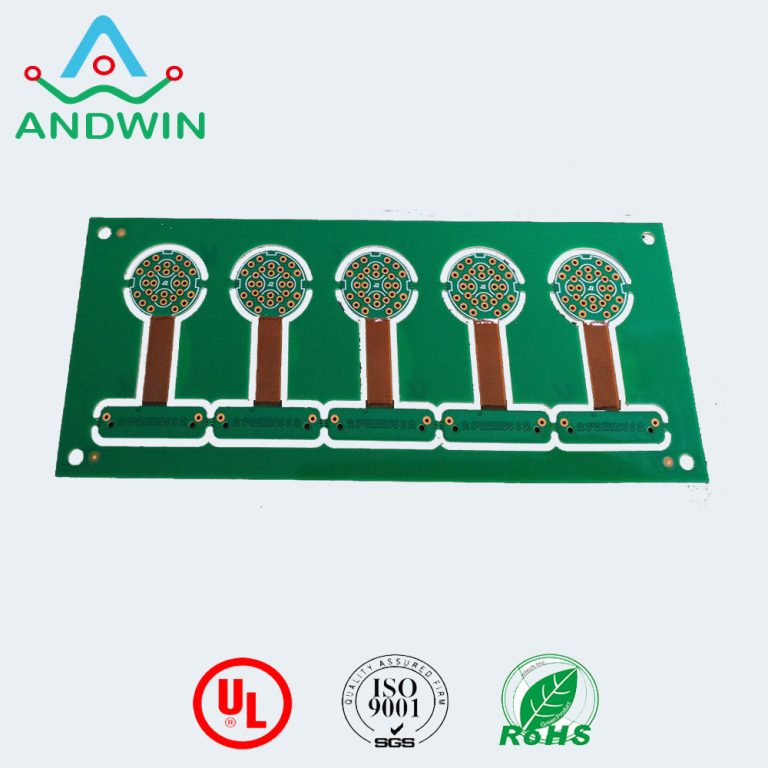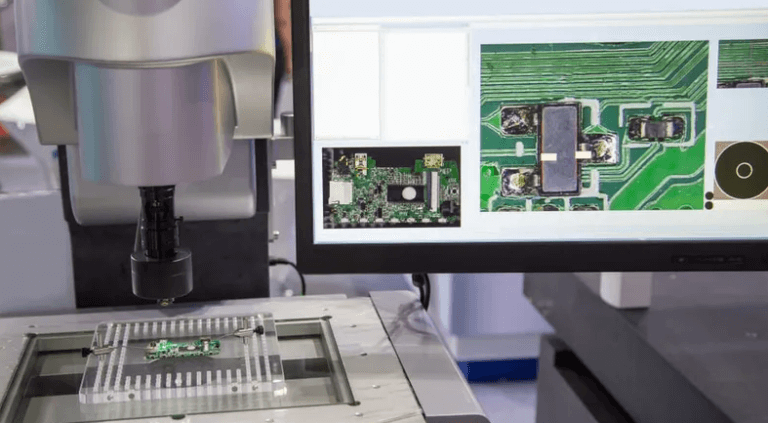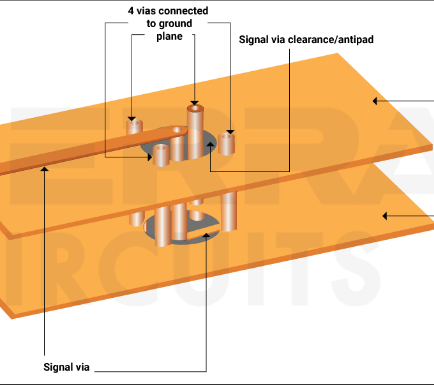Rigid flex pcb technology
Advantages Of Rigid Flex PCB Technology In Modern Electronics
Rigid flex PCB technology has emerged as a pivotal innovation in the realm of modern electronics, offering a multitude of advantages that cater to the evolving demands of contemporary electronic devices.
This hybrid technology, which combines the best attributes of rigid and flexible circuit boards, has revolutionized the design and functionality of electronic products, making it an indispensable component in various high-performance applications.
One of the primary advantages of rigid flex PCB technology is its ability to provide enhanced design flexibility.
By integrating both rigid and flexible substrates into a single board, designers can create more complex and compact electronic assemblies. This capability is particularly beneficial in applications where space constraints are a critical consideration, such as in smartphones, wearable devices, and medical implants. The flexibility of the circuit allows for three-dimensional configurations, enabling the design of more intricate and efficient electronic systems.
In addition to design flexibility, rigid flex PCBs offer significant improvements in reliability and durability.
The seamless integration of rigid and flexible sections reduces the need for connectors and solder joints, which are common points of failure in traditional circuit boards. This reduction in interconnections not only enhances the mechanical stability of the assembly but also minimizes the risk of electrical failures. Consequently, rigid flex PCBs are well-suited for use in environments that demand high reliability, such as aerospace, military, and automotive applications.
Moreover, the use of rigid flex PCB technology can lead to substantial cost savings over the product lifecycle.
Although the initial manufacturing costs may be higher compared to conventional PCBs, the long-term benefits often outweigh these initial expenses. The reduction in the number of connectors and solder joints translates to lower assembly costs and decreased maintenance requirements. Additionally, the improved reliability and durability of rigid flex PCBs can result in fewer product failures and recalls, ultimately leading to cost savings for manufacturers and end-users alike.
Another notable advantage of rigid flex PCB technology is its contribution to enhanced signal integrity and performance.
The continuous conductive paths in rigid flex circuits reduce the potential for signal loss and interference, which is crucial for high-speed and high-frequency applications. This characteristic makes rigid flex PCBs an ideal choice for advanced communication systems, data transmission devices, and other applications where signal integrity is paramount.
Furthermore, rigid flex PCBs offer superior thermal management capabilities.
The combination of rigid and flexible materials allows for better heat dissipation, which is essential for maintaining the performance and longevity of electronic components. This thermal efficiency is particularly advantageous in high-power applications, such as power supplies and LED lighting systems, where effective heat management is critical to prevent overheating and ensure optimal operation.
In conclusion, the advantages of rigid flex PCB technology in modern electronics are manifold, encompassing enhanced design flexibility, improved reliability and durability, cost savings, superior signal integrity, and effective thermal management. As electronic devices continue to evolve and become more sophisticated, the adoption of rigid flex PCBs is likely to increase, driven by the need for more compact, reliable, and high-performance solutions. This technology not only addresses the current challenges faced by electronic designers and manufacturers but also paves the way for future innovations in the ever-expanding field of electronics.

Design Considerations For Rigid Flex PCBs
Designing rigid-flex PCBs requires a meticulous approach to ensure optimal performance and reliability.
One of the primary considerations is the selection of materials.
The choice of substrates, adhesives, and copper foils must align with the specific mechanical and electrical requirements of the application. Polyimide is often preferred for its excellent thermal stability and flexibility, while adhesives must be chosen to withstand the thermal cycles and mechanical stresses the PCB will encounter.
Another critical aspect is the layer stack-up configuration.
The arrangement of rigid and flexible layers must be carefully planned to balance mechanical flexibility with structural integrity. Designers must consider the bending radius, as excessive bending can lead to mechanical failure. It is essential to adhere to the minimum bend radius guidelines provided by material manufacturers to prevent damage to the copper traces and dielectric layers.
Signal integrity is another vital factor in rigid-flex PCB design.
High-speed signals can suffer from impedance mismatches and crosstalk if not properly managed. To mitigate these issues, designers should employ controlled impedance techniques and maintain consistent trace widths and spacing. Additionally, the use of ground planes and proper shielding can help reduce electromagnetic interference (EMI) and ensure signal integrity.
Thermal management is also a significant concern, especially in applications with high power densities.
heat dissipation strategies, such as the use of thermal vias and heat sinks, are crucial to prevent overheating and ensure reliable operation. The thermal expansion coefficients of the materials used must be compatible to avoid delamination and other thermal stress-related failures.
Mechanical considerations extend beyond the PCB itself to the overall assembly process.
The integration of rigid-flex PCBs into the final product must account for the mechanical stresses during assembly and operation. Connectors, mounting points, and other mechanical interfaces should be designed to minimize stress on the flexible sections. Additionally, the routing of flexible sections should avoid sharp bends and stress points to enhance durability.
Manufacturability is another key consideration.
The complexity of rigid-flex PCBs can pose challenges in fabrication and assembly. Designers must work closely with manufacturers to ensure that the design is feasible and cost-effective. This collaboration can help identify potential issues early in the design process and implement solutions that streamline production. Design for manufacturability (DFM) guidelines should be followed to optimize yield and reduce production costs.
Testing and validation are essential to ensure the reliability of rigid-flex PCBs.
Comprehensive testing, including electrical, mechanical, and environmental tests, should be conducted to verify that the PCB meets all performance requirements. This process may involve accelerated life testing to simulate long-term operation and identify potential failure modes.
In conclusion, the design of rigid-flex PCBs involves a multifaceted approach that addresses material selection, layer stack-up, signal integrity, thermal management, mechanical considerations, manufacturability, and testing. By carefully considering each of these factors, designers can create robust and reliable rigid-flex PCBs that meet the demanding requirements of modern electronic applications. The collaboration between designers and manufacturers is crucial to achieving a successful design that balances performance, reliability, and cost-effectiveness.
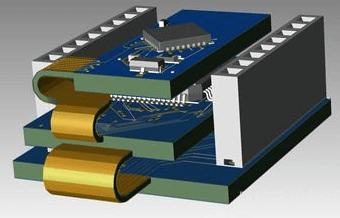
Applications Of Rigid Flex PCBs In Medical Devices
Rigid flex PCB technology has revolutionized the design and functionality of medical devices, offering a unique combination of flexibility and durability that is essential in the healthcare industry. This advanced technology integrates the best features of rigid and flexible circuit boards, resulting in a hybrid solution that can be tailored to meet the specific needs of various medical applications. The versatility of rigid flex PCBs makes them particularly valuable in the development of compact, reliable, and high-performance medical devices.
One of the primary applications of rigid flex PCBs in medical devices is in diagnostic equipment.
These devices often require complex circuitry to process and analyze data accurately. Rigid flex PCBs provide the necessary reliability and precision, ensuring that diagnostic tools such as MRI machines, CT scanners, and ultrasound devices function optimally. The ability to withstand high levels of mechanical stress and maintain signal integrity is crucial in these applications, where even minor errors can lead to significant consequences.
In addition to diagnostic equipment, rigid flex PCBs are also extensively used in therapeutic devices.
For instance, implantable medical devices such as pacemakers and defibrillators rely on the robust nature of rigid flex PCBs to ensure long-term functionality within the human body. The flexibility of these PCBs allows for better integration with the body’s natural movements, reducing the risk of damage or failure. Moreover, the miniaturization capabilities of rigid flex technology enable the development of smaller, less invasive devices, which can significantly improve patient comfort and recovery times.
Another critical application of rigid flex PCBs is in wearable medical devices.
These devices, which include fitness trackers, glucose monitors, and wearable ECG monitors, require a high degree of flexibility and durability to withstand daily wear and tear. Rigid flex PCBs provide the perfect solution, offering the necessary flexibility to conform to the contours of the human body while maintaining the structural integrity needed for reliable performance. The lightweight nature of these PCBs also contributes to the overall comfort and usability of wearable medical devices.
Furthermore, rigid flex PCBs play a vital role in surgical instruments.
Modern surgical tools often incorporate advanced electronics to enhance precision and control during procedures. Rigid flex PCBs enable the integration of these electronics into compact, ergonomic designs, facilitating better maneuverability and ease of use for surgeons. The reliability and durability of rigid flex PCBs are particularly important in this context, as surgical instruments must perform flawlessly under demanding conditions.
The integration of rigid flex PCBs in medical devices also extends to patient monitoring systems.
These systems, which track vital signs and other critical health parameters, require highly reliable and accurate circuitry to ensure patient safety. Rigid flex PCBs provide the necessary performance characteristics, enabling continuous and accurate monitoring in both hospital and home care settings. The ability to design compact and portable monitoring devices is another significant advantage, allowing for greater mobility and convenience for patients.
In conclusion, the applications of rigid flex PCBs in medical devices are vast and varied, encompassing diagnostic equipment, therapeutic devices, wearable technology, surgical instruments, and patient monitoring systems. The unique combination of flexibility, durability, and miniaturization offered by rigid flex PCB technology makes it an indispensable component in the development of modern medical devices. As the healthcare industry continues to advance, the role of rigid flex PCBs will undoubtedly become even more critical, driving innovation and improving patient outcomes across a wide range of medical applications.
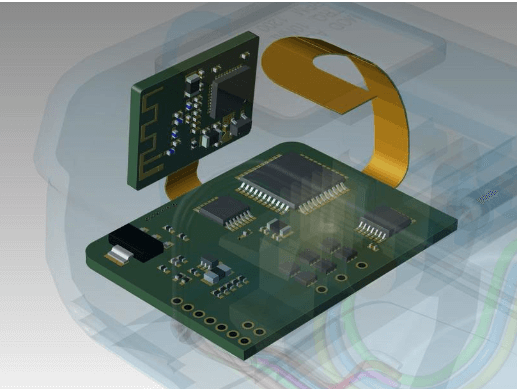
Manufacturing Challenges And Solutions For Rigid Flex PCBs
Rigid flex PCB technology, which combines the benefits of both rigid and flexible circuit boards, has become increasingly popular in various industries due to its versatility and reliability. However, the manufacturing process of rigid flex PCBs presents several challenges that must be addressed to ensure high-quality and functional end products.
One of the primary challenges in manufacturing rigid flex PCBs is the complexity of the design process.
Unlike traditional PCBs, rigid flex PCBs require a meticulous design approach that accounts for both the rigid and flexible sections. This necessitates a thorough understanding of the mechanical and electrical properties of the materials used, as well as the specific requirements of the application. To overcome this challenge, manufacturers often employ advanced computer-aided design (CAD) software that allows for precise modeling and simulation of the PCB layout. This enables designers to identify potential issues early in the design phase and make necessary adjustments before proceeding to production.
Another significant challenge in the manufacturing of rigid flex PCBs is the selection of appropriate materials.
The materials used in rigid flex PCBs must exhibit excellent flexibility, durability, and thermal stability to withstand the stresses encountered during operation. Polyimide is commonly used for the flexible layers due to its superior thermal and mechanical properties, while FR4 is typically used for the rigid sections. However, the bonding process between these materials can be complex and requires careful control of temperature and pressure to ensure a reliable connection. Manufacturers often employ specialized bonding techniques, such as adhesive bonding or thermal compression bonding, to achieve a strong and durable bond between the rigid and flexible layers.
The manufacturing process of rigid flex PCBs also involves several intricate steps, including drilling, plating, and etching.
Each of these steps must be executed with high precision to avoid defects that could compromise the performance of the final product. For instance, drilling holes in the flexible sections requires specialized equipment and techniques to prevent tearing or delamination of the material. Similarly, the plating process must ensure uniform deposition of conductive materials to maintain electrical continuity across the rigid and flexible sections. To address these challenges, manufacturers often invest in state-of-the-art equipment and implement stringent quality control measures throughout the production process.
In addition to the technical challenges, the manufacturing of rigid flex PCBs also involves logistical considerations.
The production process often requires multiple iterations and close collaboration between design and manufacturing teams to ensure that the final product meets the desired specifications. This necessitates effective communication and coordination to address any issues that may arise during production. Manufacturers can streamline this process by adopting integrated design and manufacturing platforms that facilitate real-time collaboration and feedback between teams.
Despite these challenges, advancements in technology and manufacturing techniques have enabled the production of high-quality rigid flex PCBs that meet the demanding requirements of various applications.
For instance, the use of laser drilling technology has significantly improved the precision and accuracy of hole drilling in flexible sections, while advancements in material science have led to the development of new materials with enhanced properties. Additionally, the implementation of automated inspection systems has improved the detection and correction of defects during the manufacturing process, ensuring higher yields and better quality control.
In conclusion, while the manufacturing of rigid flex PCBs presents several challenges, these can be effectively addressed through careful design, material selection, and advanced manufacturing techniques. By leveraging the latest technologies and adopting a collaborative approach, manufacturers can produce reliable and high-performance rigid flex PCBs that meet the needs of various industries.


